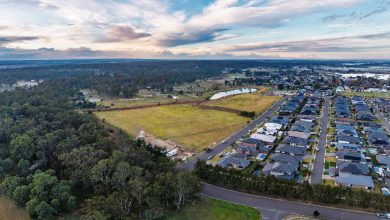18 Cows Poisoned in the Hawkesbury after Eating Lantana
By Tony Bosworth, Editor Hawkesbury Post
Livestock producers in the Hawkesbury are being warned to watch for signs of plant toxicity and monitor paddocks for new weeds following several fatal poisonings in flood-impacted areas of the region.
Greater Sydney Local Land Services District Veterinarian Dr Aziz Chowdhury responded to calls for assistance following the sudden deaths of 18 cattle on flood-affected properties in the Hawkesbury recently.
Most of the deaths have been in the Colo area so far, but GSLLS says all landowners across any flood-affected areas of the Hawkesbury should be alert.
“Investigations revealed the cause of death was severe liver damage and kidney failure resulted from the consumption of Lantana,” Dr Chowdhury said.
“All types and parts of lantana are considered poisonous to stock. Red-flowered lantana is most dangerous. Stock poisoning is common. It happens most when new animals are introduced into lantana areas and there is no other feed available. 4-8 gm dried plant per kg live weight is a toxic dose but as little as 2 gm/kg body weight could cause the toxicity.
“Cattle used to grazing lantana-infested land are less likely to eat it,” says Dr Chowdhury. “However due to the recent flooding emergencies in our region the prevalence of new weeds in impacted paddocks has risen dramatically and we need producers to be on alert.”
Early symptoms of lantana poisoning include: depression, loss of appetite, constipation, frequent urination, jaundice for 1 – 2 days with photosensitisation of nonpigmented skin, especially the muzzle, inflamed eyes with a slight discharge, mouth area becoming inflamed, moist, and very sensitive, with a pink nose, bare skin becoming very sensitive to light, red and swollen, or may crack, turn black, and die.
Stock usually dies 1 – 4 weeks after symptoms appear.
Dr Chowdhury said it was a slow and painful death caused by liver and kidney failure. “Look out for the symptoms but also look out for new and unusual plants that may cause fatalities,” he said. “If you notice any of the signs, you should seek veterinary assistance immediately.”
Dr Chowdhury said rapid treatment with a drench of 2.5kgs of activated charcoal can be effective if given early in the course of the poisoning. Electrolytes should also be given to alleviate dehydration. Visit NSW Weedwise for more information.
You can read more Hawkesbury news at Hawkesbury Post www.hawkesburypost.com.au or facebook.com/hawkesburypost).











